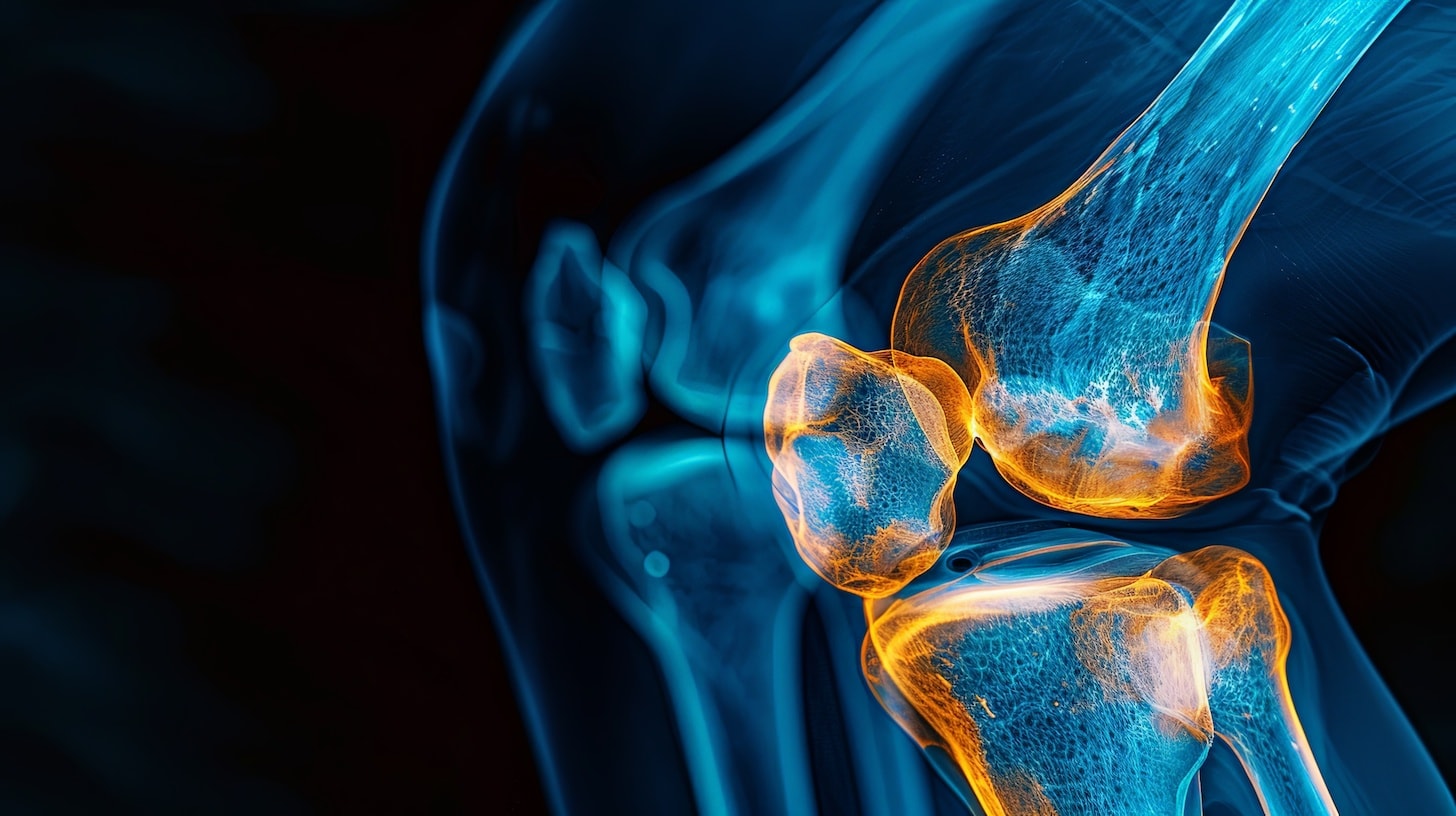Robotic-assisted knee arthroplasty offers significant benefits and improved outcomes for patients undergoing knee replacement surgery. By incorporating advanced robotics, surgeons achieve greater precision, leading to better implant placement, reduced tissue damage, and quicker recovery times. This article explores the role of robotics in knee arthroplasty benefits and outcomes, highlighting the main advantages and how they impact patient experiences.
Key Takeaways
- Robotic-assisted knee arthroplasty enhances surgical precision, leading to better implant placement and reduced tissue damage.
- Patients undergoing robotic knee replacement often experience quicker recovery times, less pain, and improved knee function post-surgery.
- While robotic knee surgery offers numerous benefits, including higher patient satisfaction and fewer complications, it also comes with higher costs and the need for specialized surgical training.
The Role of Robotics in Knee Arthroplasty: Benefits and Outcomes Explained
Robotic knee replacement surgery is a refined blend of the surgeon’s skill and advanced robotics, creating a symphony of precision that was once unattainable. It’s a technology that has been evolving since 2006, becoming an essential tool in orthopedic surgeons’ arsenals. With a robotic arm at their disposal, surgeons can execute knee replacements with unparalleled accuracy, ensuring each patient receives a perfectly fitted knee implant.
But what does this mean for you, the patient? It’s the promise of a smoother surgery with fewer complications and a knee that not only feels more natural but is also likely to last longer. The benefits of robotic assistance in knee replacement surgery are clear, from improved implant placement to minimized tissue damage and expedited recovery times. These advancements are not just improving surgeries; they are changing lives.
Introduction
Stepping into the world of robotic-assisted knee arthroplasty, one cannot help but marvel at how this technology is reshaping traditional surgical methods. Gone are the days of one-size-fits-all knee replacements. Instead, we’re in an era where every procedure is meticulously tailored to the individual’s unique anatomy, ensuring a perfect fit and natural knee function.
The precision of robotic technology means that the artificial knee is aligned with a level of accuracy that manual techniques can’t match. This not only enhances the patient’s comfort post-surgery but also contributes to the longevity of the knee implant. With the added advantages of minimally invasive techniques, the learning curve for patients and surgeons alike is steep, but the outcomes are undeniably superior.
Understanding Robotic-Assisted Knee Arthroplasty
Robotic-assisted knee arthroplasty is not just a procedure; it’s a technological marvel. The system doesn’t replace the surgeon but rather enhances their capabilities with precision tools and real-time feedback. Advanced imaging and computer software map out the knee joint, allowing for a surgical plan that’s as unique as the patient’s own anatomy. This is a far cry from the one-size-fits-all approach of the past and represents a significant leap forward in personalized medical care.
Since the adoption of robotic-arm-assisted technology in 2006, the evolution has been profound. Systems like ROSA and VELYS have fine-tuned the art of knee replacement. These systems don’t just assist surgeons; they empower them to recreate the knee’s natural biomechanics, leading to a more comfortable, more effective knee replacement.
How Robotic Systems Enhance Surgical Precision
The precision of robotic-assisted knee surgery is unparalleled. Imagine a robotic arm that guides a surgeon’s hand with microscopic accuracy, ensuring each incision and bone cut is executed with the utmost care. This is the level of detail provided by robotic surgical assistants in the operating room, enabling surgeons to:
- Follow a preoperative plan with unparalleled precision
- Perform complex procedures with greater accuracy
- Minimize the risk of human error
- Improve patient outcomes and recovery time
Robotic-assisted knee surgery, also known as robotic-assisted TKA, is revolutionizing the field of orthopaedics and providing patients with a new level of surgical precision.
This isn’t about replacing the surgeon’s skills but augmenting them. The robotic arm, equipped with real-time feedback mechanisms, allows for adjustments on the fly, ensuring that the knee implant is aligned perfectly with the patient’s unique anatomy. It’s a game-changer, reducing the risk of human error and setting a new standard in surgical precision.
Personalized Surgical Planning with Robotics
The journey to a successful robotic knee replacement, including partial knee replacement, begins long before the first incision. It starts with a personalized surgical plan, crafted from detailed preoperative imaging such as CT scans that create a 3D model of the knee joint. This model is not just a replica; it’s a blueprint for the surgery, allowing the surgeon to plan each step with the patient’s specific anatomy in mind.
Robotic technology enables a level of customization in knee replacement surgery that was once a distant dream. This personalized approach can lead to better knee function, less pain, and a quicker return to normal activities. It’s a process that places the patient at the center, ensuring their needs and anatomy drive the surgery, not the other way around.
Benefits of Robotic-Assisted Knee Arthroplasty
The benefits of robotic-assisted knee arthroplasty are numerous and impactful. At the heart of these advantages is the promise of a more natural-feeling knee, reduced recovery time, and the potential for a quicker return to everyday life. The technology’s precision means that patients are less likely to face complications or require follow-up surgeries, which can be both costly and stressful.
But the benefits of robotic assistance in knee replacement surgery extend beyond the operating room. Patients often experience:
- Less tissue damage
- More accurate implant placement
- Less pain
- Faster recovery
- Better quality of life post-surgery
It’s no wonder that more and more patients are opting for robotic assistance in their knee replacement surgeries.
Improved Implant Placement
One of the most significant benefits of robotic knee surgery is the improved placement of knee implants. With robotic assistance, surgeons can position the new joint with a level of accuracy that ensures optimal knee function and range of motion. This precise alignment is crucial not only for comfort but also for the longevity of the implant.
The result? A knee that feels more like the original, moves more naturally and stands a better chance of lasting many years without the need for revision surgery. It’s a win for both the patient and the surgeon, as the precision of robotic technology translates into successful surgeries and high patient satisfaction.
Reduced Tissue Damage
The delicacy of robotic knee surgery is evident in the reduced tissue damage it causes. Robotic arms, guided by precise imaging and real-time feedback, make smaller and more exact incisions, preserving the surrounding healthy tissue. This minimally invasive approach means less trauma to the knee area and, as a result, less pain during the recovery process.
Patients benefit from this gentle approach with a faster healing process and a quicker return to pain-free movement. The precision of robotic technology not only improves the surgery outcome but also the patient’s experience during the critical postoperative period.
Quicker Recovery Times
Speedier recovery times are a hallmark of robotic-assisted knee arthroplasty. Thanks to the minimally invasive nature of the surgery, patients often find themselves back on their feet sooner than they might expect. The smaller incisions and precise techniques mean that the body has less healing to do, and patients can often start physical therapy and return to their daily activities more quickly.
This expedited recovery is not just good for patient morale; it’s beneficial for the healthcare system as a whole, as it can lead to shorter hospital stays and fewer resources required for postoperative care. It’s a testament to how robotic technology not only enhances the surgical process but also the patient’s journey to recovery.
Comparing Robotic-Assisted and Traditional Knee Replacement
When comparing robotic-assisted knee replacement to its traditional counterpart, the differences in patient outcomes are striking. Those who opt for robotic surgery often report fewer complications, quicker recoveries, and a smoother transition back to their daily lives. The precision of robotic systems contributes to these improved outcomes, reducing the likelihood of issues that can lead to hospital readmissions or additional rehabilitation.
Despite the potential for increased blood loss due to longer operative times and a learning curve for surgical teams, the long-term benefits of robotic knee replacement are compelling. Some of these benefits include:
- Improved precision and accuracy in implant placement
- Reduced risk of complications and revision surgeries
- Faster recovery and rehabilitation
- Improved range of motion and joint function
- Enhanced patient satisfaction
As surgical teams become more accustomed to the technology, operative times and comfort levels are expected to improve, further enhancing patient outcomes.
Success Rates and Patient Satisfaction
The success rates of robotic knee replacement surgeries, including total knee replacement, speak volumes. With a success rate hovering around 95%, patients can enter the operating room with confidence. Moreover, satisfaction rates are notably higher for robotic-assisted total knee arthroplasty, with patients reporting significant improvements in knee function and overall satisfaction post-surgery.
Patients often express high levels of satisfaction due to the meticulous attention to detail that robotic surgery provides. Some of the benefits reported by patients include:
- Reduced pain
- Improved knee function
- Personalized treatment
- Precision of robotic-assisted procedures
These factors contribute to the positive experiences reported by patients.
Potential Risks and Disadvantages
Like any surgical procedure, robotic-assisted knee replacement is not without its potential risks and disadvantages. While the benefits are significant, patients must consider factors such as:
- the higher costs associated with the robotic equipment
- the specialized training required for surgeons
- the longer operative times associated with robotic procedures, which can lead to increased intraoperative costs
- a slightly elevated risk of infection
It’s also important to note that not all patients will have access to this technology, as it may not be available in all hospitals or covered by all insurance plans. Patients should have thorough discussions with their orthopaedic surgeon and insurance provider to understand their options and potential out-of-pocket expenses.
Candidacy for Robotic-Assisted Knee Arthroplasty
Determining candidacy for robotic-assisted knee arthroplasty is a critical step in the preoperative process. Candidates for traditional knee replacement are generally suitable for the robotic-assisted approach, particularly those with severe knee conditions that haven’t responded to conservative treatments. However, certain health conditions or medications may preclude patients from undergoing the procedure.
It’s essential for patients to consult with their surgeon to assess their suitability for robotic-assisted surgery. The surgeon will consider the patient’s overall health, medical history, and specific knee condition to ensure that the benefits of the robotic approach align with the patient’s needs and expectations.
Future of Robotic Technology in Knee Surgery
The horizon of robotic technology in knee surgery is filled with potential. As advancements continue, we can expect:
- Greater precision in surgical procedures
- Longer-lasting implants
- Fewer complications
- The integration of artificial intelligence and machine learning to further refine preoperative planning and intraoperative decision-making, setting new standards in orthopaedic care.
As robotic technology becomes more cost-effective and accessible, it’s likely to become a standard of care in knee surgery, offering enhanced outcomes to a broader patient population. The future of knee arthroplasty is promising, with ongoing innovations poised to improve patient care and surgical success rates even further.
Summary
The integration of robotics into knee arthroplasty represents a significant stride forward in medical technology. It offers a blend of precision, personalization, and efficiency that traditional methods simply cannot match. Patients benefit from quicker recoveries, less pain, and implants that function better and last longer. The future of knee surgery is not on the horizon; it’s already here, reshaping lives one robotic-assisted procedure at a time. For those considering knee replacement, robotic technology offers a path to a more active, pain-free life, with an array of benefits that continue to grow as the technology evolves. Contact Plancher Orthopaedics to receive the latest renditions of robotic knee arthroplasty & surgery.
Frequently Asked Questions
What makes robotic-assisted knee replacement different from traditional knee surgery?
Robotic-assisted knee replacement offers better implant placement, reduced tissue damage, and quicker recovery times compared to traditional knee surgery, thanks to advanced imaging and robotic arms.
Can anyone undergo robotic-assisted knee replacement surgery?
Yes, candidates for traditional knee replacement are usually suitable for robotic-assisted surgery, but it’s important to consult with an orthopaedic surgeon to determine eligibility.
Are there any risks associated with robotic knee replacement?
Yes, there are potential risks associated with robotic knee replacement, including higher intraoperative costs, longer surgical times, and a learning curve for surgeons. It’s important for patients to discuss these factors with their healthcare provider.
How long is the recovery after robotic knee replacement surgery?
Recovery after robotic knee replacement surgery can vary, but many patients can resume regular activities within two to three months due to the minimally invasive nature of the procedure. Fast recovery is often experienced.
Will my insurance cover robotic-assisted knee replacement?
Coverage for robotic-assisted knee replacement varies by insurance provider, so it’s important to check with your insurance to understand any potential out-of-pocket expenses.





 William D. Murrell, MD
William D. Murrell, MD Thomas B. Evely, DO
Thomas B. Evely, DO Clifford Voigt, MD
Clifford Voigt, MD Karthikeyan Chinnakkannu, MD
Karthikeyan Chinnakkannu, MD Max N. Seiter, MD
Max N. Seiter, MD Demetris Delos, MD
Demetris Delos, MD Lauren M. Fabian, MD
Lauren M. Fabian, MD